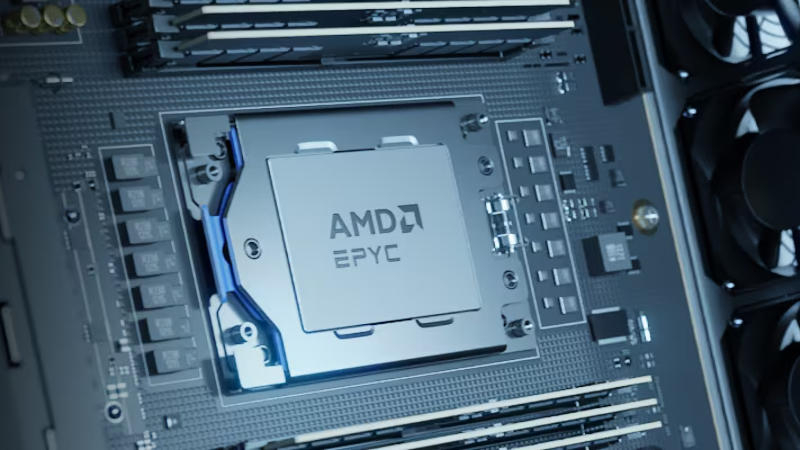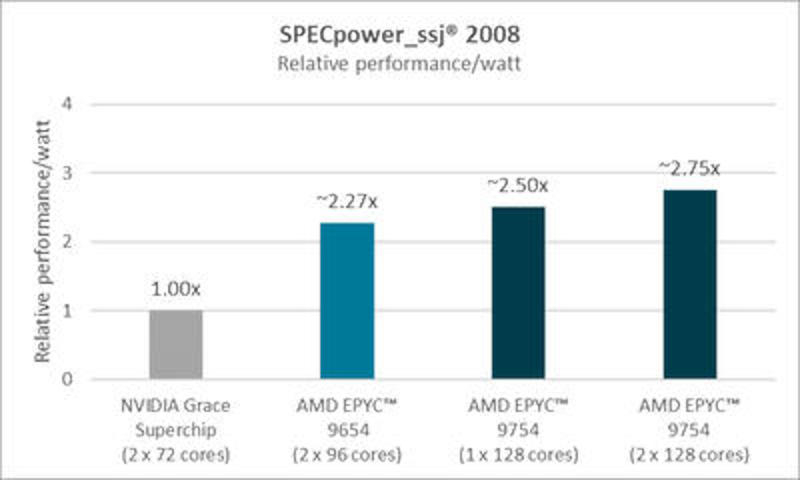Nvidia has yet to prove that it can develop competitive server processors, but established player AMD has already demonstrated that it takes Nvidia’s 72-core Arm processor Grace Hopper Superchip seriously. The company compared its EPYC chips with the Nvidia Grace platform and declared a twofold advantage of its own product. The publication, of course, should be taken with some skepticism, but it gives some insight into Nvidia Grace.

Image source: amd.com
According to AMD’s tests, its EPYC 9754 (128 cores) and 9654 (96 cores) processors more than double the performance of the 72-core Nvidia Grace Superchip in a variety of workloads, including general purpose computing, Java, transactional databases, and adoption support systems. solutions, web servers, analytics, video encoding and high performance computing (HPC). Thus, in the SPECpower_ssj2008 test, one- and two-socket systems based on AMD EPYC 9754 outperformed Nvidia Grace by about 2.50 and 2.75 times, respectively, and a two-socket server on AMD EPYC 9654 turned out to be faster than its Nvidia counterpart by about 2.27 times.

EPYC processors, AMD says, hold more than 300 world records for both performance and efficiency in a variety of benchmarks, including business applications, technical computing, data management, data analytics, digital services, media and entertainment, and infrastructure solutions. But it should be noted that Nvidia Grace Hopper chips are designed for workloads related to training and running artificial intelligence systems.

AMD EPYC processors are built on the x86 architecture, which means they are compatible with a wide range of software, while Nvidia Grace processors have the Arm architecture, which is still less common. AMD points out that EPYC chips offer a lower Total Cost of Ownership (TCO) than Nvidia Grace, given their high performance, power efficiency and compatibility with existing software, but does not mention that in tasks related to training and AI operation The green platform itself can offer significant advantages over AMD Instinct accelerators.